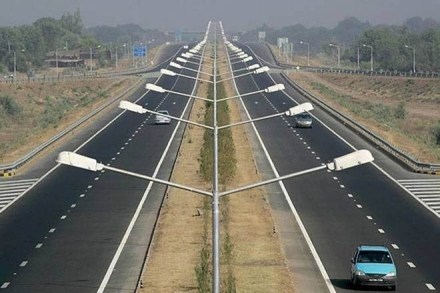Privately-funded highway projects in the country, the awards of which have become few and far between over the years but have of late shown early signs of revival, will get a shot in the arm soon, with a bolstered revenue protection clause being built into the concession agreement. Under the clause, in every five years during the concession period, the revenue potential of a build-operate-transfer (BOT-toll) project will be re-assessed, against every 10 years now. Therefore, if need be, the concession could will be extended early in the tenure of the contract, adding to certainty of cash flows.
Though the potential investors in the BOT-toll segment have welcomed the move, they say the best and most practical way to mitigate the project risk is to prolong the concession period flexibly, to accommodate any revenue slippage. Currently, the model concession agreement (MCA) allows such tenure changes but a concession period can’t still be extended beyond 20% of the original tenure, which is usually 20 years. The developers want this ceiling to go.
To protect investor interest in BOT-toll projects, the growth of which will help curtail NHAI’s rising debt and find non-government, non-debt resources for highway development, the government will also guarantee to the developers that a BOT-toll project will be awarded only after NHAI taking possession of 90% of the requisite land. At present, BOT-toll and HAM projects are awarded once 80% of the land acquisition is completed, while in the case of fully government-funded EPC projects, the award is executed only after 90% of the land is acquired.
An inter-ministerial group comprising the think-tank Niti Aayog and ministries of finance and road transport and highways has already cleared the MCA modifications, sources said. A final approval is awaited from minister for road transport and highways Nitin Gadkari. “Our approach has been to minimise the risk element for private developers. We have tried to bring in many changes in the new MCA. We have also introduced the facility of conciliation for BOT (Toll) projects,” said a senior government official.
Virendra D Mhaiska, chairman and managing director at IRB Infrastructure, which has recently emerged as the highest bidder for the Dankuni-Palsit (63.83 km) BOT project quoting a 4.5% viability grant, told FE that the firm had a preference for the BOT-toll model, which allows investors to own assets for 20-plus years with the prospects of steady cash flow during the period. He said the floor-and-cap model of variable concession periods linked to traffic would protect the interest of both the concessionaire and the NHAI.
Rajeshwar Burla, vice-president, Icra Ratings, said the provision for traffic testing in every five years is a definite positive because projects which are fundamentally weak due to lower-than-envisaged base traffic would get an opportunity to increase the concession period at an early stage. With the benefit of revised tariff projections, lenders may consider elongation in debt tenure, thereby addressing the developers’ cash flow issues.
The government, however, did not pay heed to the developers’ demand that a compensation be paid in case a competing road comes in and causes traffic diversion from the project. The official said since the MCA proposes revision of the concession period based on flow of traffics, the concept of competing road needed no consideration.
The National Highways Builders’ Federation (NHBF) wants developers to be adequately compensated as the recent revision in the law with regard to axle load parameters permitting vehicles to carry increased load has caused a reduction in traffic volume and thus, loss in the revenue for the developers. In BOT-toll concessions, there is no provision for the payment in case of escalation in basic cost for the raw materials like cement, steel, bitumen and fuel, the builders added. The escalation should be compensated to the concessionaire for these items and may be fixed at the bidding stage itself, the NHBF said. It is not immediately known whether the revised MCA has addressed these concerns.
The revised MCA has learnt to have mandated the NHAI not to give the appointed date without fulfilling all its responsibilities. This is a positive again, given that disputes concerning BOT (Toll) projects usually arise due to delays in land acquisition and statutory clearances such as forests and environment by NHAI.
The government felt the need to modify the existing MCA for BOT (Toll) projects since overdependence on engineering procurement and construction (EPC) and hybrid annuity model (HAM) was adversely impacting the financial of the executing authorities such as the NHAI. The task force on National Infrastructure Pipeline (NIP) also suggested the need to downplay HAM as it has adversely impacted the BOT (toll) segment.
From a high of 96% of its all project awards in 2011-12, NHAI’s project awards through the BOT (toll) route came to a naught in the last two fiscals. However, it attempted two projects in West Bengal recently and received bidders’ response. Under HAM, the NHAI bears 40% of the project cost upfront and the remaining 60% is paid to the developer over a period of 15 years. In EPC projects, government bears the entire financial burden.
The government also needed to make things easier for private sector investors to take up project in the BOT (toll) model since there are not many developers to take up projects in the route where they have to bear all construction expenses. Only 5-7 sturdier players who have the wherewithal to play on their balance sheet strength and understand traffic risk can take up projects on BOT (toll). The EPC and HAM spaces are more crowded with 15-20 active bidders.
Private developers/investors in the BOT (toll) space seek a firm, clear and bankable concession contract to ensure elimination of all ambiguities and safeguarding of their investment.
